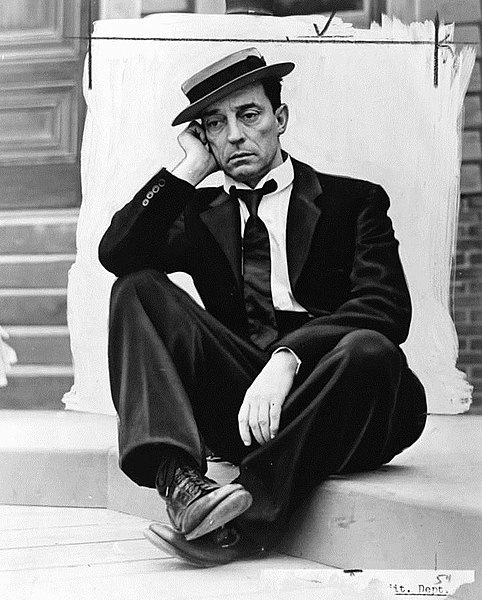Along with Harold Lloyd and Charlie Chaplin, Buster Keaton was seminal among silent film actors. What’s more, like Lloyd, Keaton was a courageous stunt performer. In 1996, “Entertainment Weekly” rated Keaton — also known as “The Great Stone Face,” because of his deadpan delivery style — as the seventh greatest film director o all time. Additionally, famed film critic Roger Ebert referred to the “extraordinary period from 1920 to 1929” when Keaton “worked without interruption” and how that nearly decade-long epoch of cinematic creativity surely made him the “greatest actor-director in the history of movies.”
In the late director/film scholar Peter Bogdonovich’s final film, made in 2018, The Great Buster: A Celebration, the life and career of Buster Keaton (born Joseph Frank Keaton in 1895) we are given reason to believe and accept the accolades received by Keaton.
With a compilation of interviews with Dick Van Dyke, Carl Reiner, Mel Brooks, Bill Hader, French Stewart (who performed as Keaton in a Los Angeles small stage theater), Quentin Tarantino and others, we are left with no doubt about Keaton’s creative contributions to the craft of filmmaking and the athleticism required of him and fellow stunt performers.
Keaton was born into show business. His parents were vaudeville performers who included their child in their act from toddlerhood and beyond, actually lunging the young boy across the stage and into the orchestra pit and sometimes into the audience. Amazingly Keaton withstood the rigors of the vaudeville act unscathed and unscratched. So often was the child hurled across the stage that his parents thought to sew a handle on the young Keaton to make the hurling more easily accomplished.
Bogdonovich surveys the movies—a series of two-reel comedies—which bolstered Keaton’s reputation as an auteur and master of stunts, including Cops (1922), Sherlock Jr. (1924) and The General(1926), which Orson Wells thought of as “the greatest comedy ever made…and perhaps the greatest film ever made.”
The Great Buster doesn’t ignore or avoid the not so great periods in Keaton’s life. Keaton was married three times, served in World Was One and battled alcoholism. Moreover, he and his family had close ties with luminaries of the era, such as magician Harry Houdini and silent film star Fatty Arbuckle.
Though his career faded with the advent of “talkies” and with artistic disputes with the mega movie studios, Keaton reemerged as a television celebrity, playing a role in a “Twilight Zone” episode and making guest appearances in popular variety shows of the era , such as The Gary Moore Show and The Ed Sullivan Show.
In 1959, Buster Keaton was at last recognized by the Academy of Motion Picture Arts and Sciences with an honorary Oscar for his legacy and contribution to the craft of cinema.
What: The Great Buster: A Celebration.
Who: Buster Keaton, Directed by Peter Bogdonovich.
How: The documentary is currently streaming on Turner Classic Movies (TCM).
The Influencers: Buster Keaton


